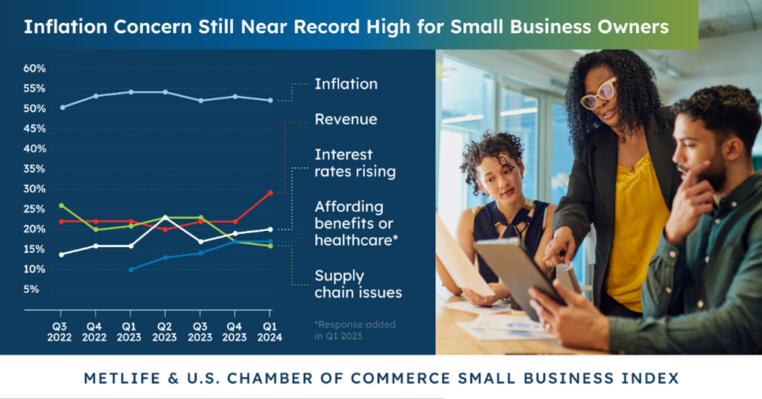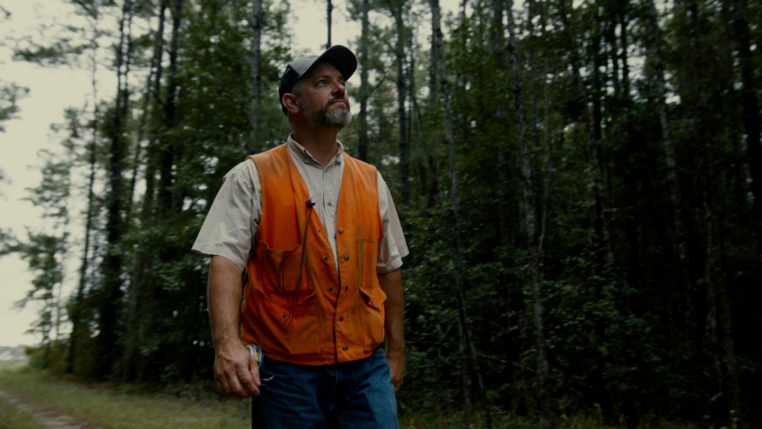Strengthening Partnerships

The Appalachian Region is an area made up of high mountains and broad valleys. According to scientists, the Appalachians began forming around 480 million years ago, during the Ordovician period, making them among the oldest mountains on Earth. The peaks of these mountains provide an ideal environment for growing a variety of tree species. The region’s vast tree diversity contributes to its beauty and presents unique challenges not to be underestimated when working in those areas. The Appalachians present one of the toughest and most challenging environments for logging anywhere.
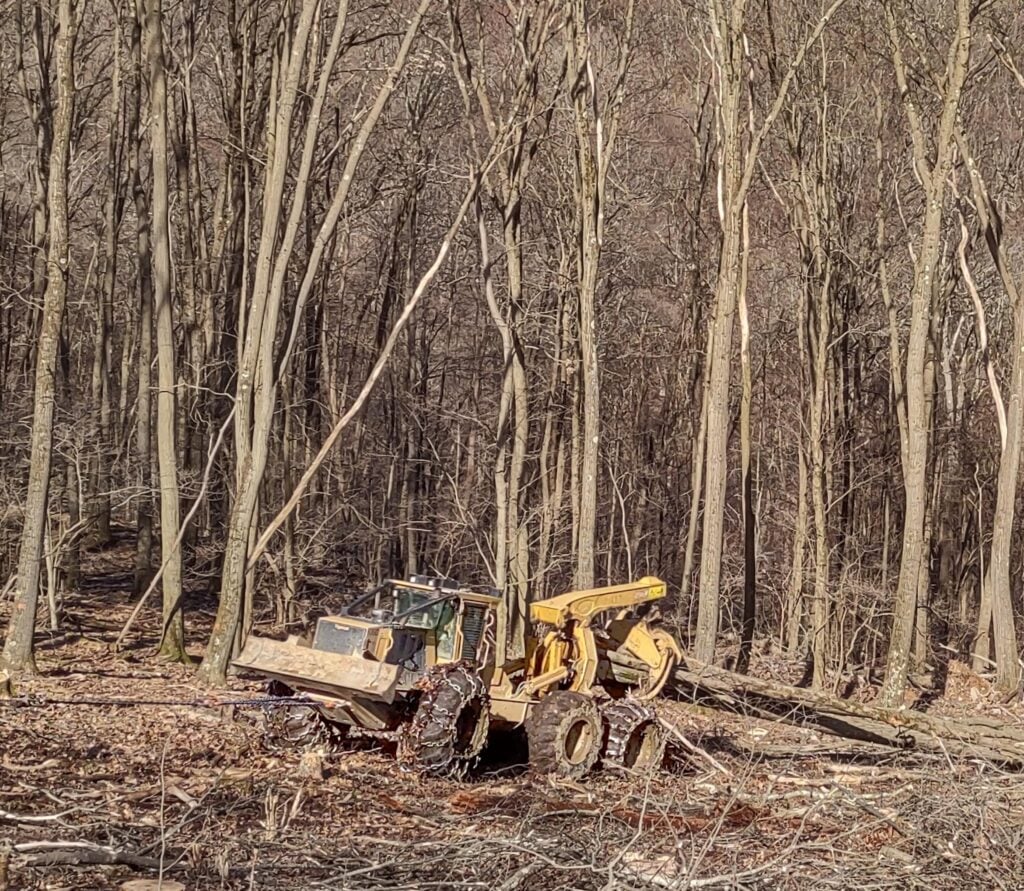
West Virginia Extension and West Virginia University (WVU) hosted a Tethered/Winch Assist Steep Slope Logging Demo in early March. The three-day event was held at the WVU Research Forest near Bruceton Mills, WV. Equipment manufacturers, pro loggers, and forestry companies were among the many sponsors. Pat Donnelly, West Virginia University Extension, invited me to attend. He administers the Timber Safe Network Logger Safety Program, which has participants in WV, Kentucky, and Ohio.
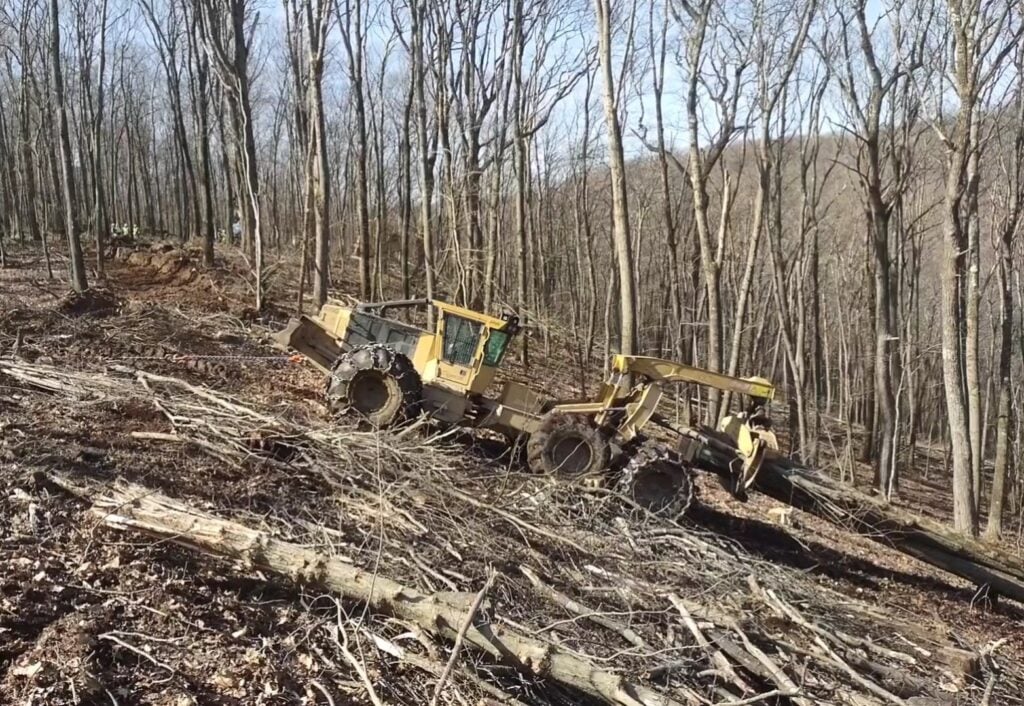
The logging demo was the first of its kind in WV. Like with any logging job, there were unexpected breakdowns and unpredictable weather. These minor distractions didn’t change a thing. The manufacturers were on the site with their tracked feller-bunchers fitted with the felling heads designed for cutting hardwood timber. The setup, combined with a cable assist winch system, provided the traction assistance needed for a machine to cut large hardwood trees while maneuvering up and down extremely steep slopes. John Deere and Tigercat skidders were included in the equipment spread. The skidders used the tethered/winch assist technology to skid trees uphill to the ridge. It sounded like the dealers were fielding a lot of questions from loggers as they explained how the systems were designed and their many functions. When I asked the sales guys for their thoughts about the demo, they expressed their appreciation and acknowledged this was a great idea. They liked the opportunity to have a live, in-woods field event that provided a comparison of machines.
One of the winch systems on site had been developed in Austria and was called the “T-Winch.” It was radio-controlled and could be remotely operated and repositioned on command by the operator while running the feller-buncher or skidder. The winch was portable and lightweight (24,000 lbs) and could be moved from job to job with a goose-neck trailer. Another machine had a larger winch system mounted on an excavator carrier. It had a dual purpose and could be transformed from a tethered/winch assist feller-buncher into an excavator. By adding the bucket attachment, the logger could build roads and close out the timber sale. Both machines offered unique options that allowed loggers to judge for themselves the best machine for them.
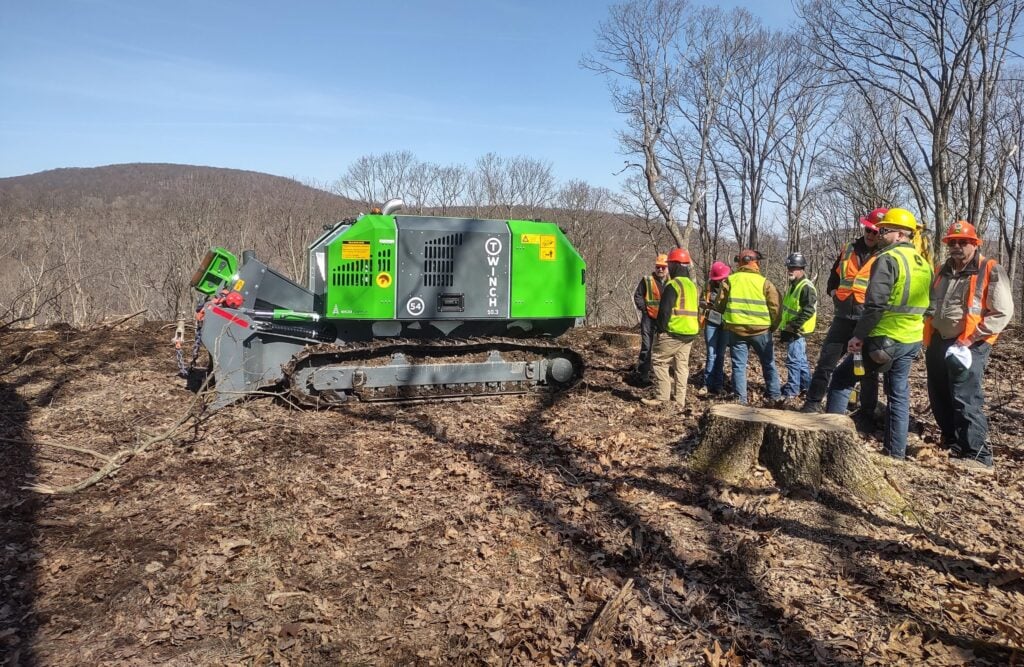
There were over 600 attendees at the demo. One logger I spoke with was considering the new equipment to improve the overall safety of his operation. Another contractor had transitioned a few years ago to a fully mechanized system. He was looking at the winch assist machines to provide access to the biggest trees growing on the steepest slopes. There were three generations of loggers in their business, and this would be a strategic move for them! I asked how they determined if the added costs of the equipment were worth the investment. One logger stated the markets would need to improve to offset the extra cost. Another response came from a contractor who seemed to understand the big picture. He knew the loggers and the markets needed to work together to have any chance of success. Partnerships would need to be formed, and compromises would need to be made by everyone. There’s already been a lot of work being done in WV with the tethered/winch assist logging. This logging demo was a great example of strengthening visibility and reaching new partners. Successful partnerships are never one-sided, and sometimes they leave you scratching your head, asking, “Was it really worth the effort?” My experience with these types of projects has shown me that the end results aren’t always what I expected but almost always better than what I had!
FRA (www.forestresources.org) presents many opportunities to create new partnerships while continuing to strengthen existing ones! Visit our website to find out just how we do it!
